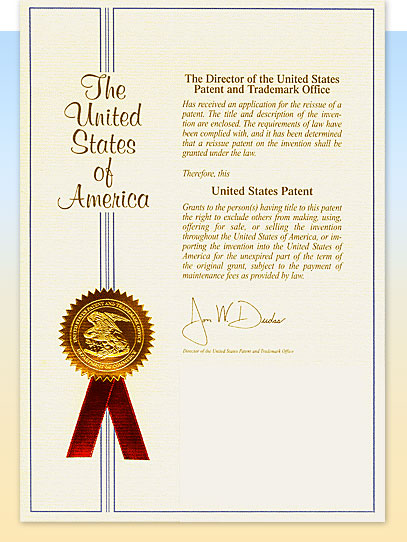Glutathione
The Master Antioxidant
Due to its widespread applicability and multifaceted importance, glutathione has been labeled the master antioxidant by researchers including Dr. John Pinto of Memorial Sloan Kettering Cancer Center in New York. The fundamental necessity of glutathione in all eukaryotic organisms is perhaps best indicated by findings in the literature that glutathione biosynthesis takes place in every eukaryotic cell.
Upon its discovery in 1888, this molecule was deemed so crucial as to be regarded as a necessary component in the origin of multicellular life. In many ways, glutathione is like a vitamin, with numerous critical functions to ensure the healthy operation of each one of our cells.
Using Natural Physiological Pathways to Replenish Glutathione
Despite its central role in cellular health, growth, and operation there, glutathione’s mechanism of action as an antioxidant means that it must constantly be replenished (turnover of glutathione in normal liver, estimated in rodents and humans, approximates 20% per hour). When an organism’s bodily levels of oxidative stress increase (as can result from exposure to pathogens, toxins, dietary factors, temperature changes, and many other inputs), glutathione is not able to be regenerated sufficiently, and the health, immune, and cellular function of the organism are restricted and threatened.
Restoring the bodily levels of glutathione traditionally involves certain scientific challenges because of the chemical subtleties and technicalities presented by the amino acids involved in its aforementioned biosynthesis, (a process which can only occur intracellularly). In addressing this challenge, Dr. Albert B. Crum’s unprecedented invention of Immune Formulation 200® utilizes natural physiological pathways to replenish bodily glutathione whenever and wherever it is depleted, providing substantial immune and cellular support to even the healthiest consumer.
Glutathione fights aging through at least two major pathways — your gut and your bloodstream.
One: When you eat glutathione, as in food or supplements, it gets into cells of your gastrointestinal tract and sets up a fat-detoxification system on the site, blocking an exportation of oxidized fat throughout your body. How much glutathione gets to other parts of the body intact, however, is uncertain, because digestive juices break down glutathione into other substances. Thus, glutathione from foods and supplements may not reach the bloodstream and other tissues and organs in sufficient amounts to make a major difference.1
Two: You can boost glutathione in your blood and consequently in all other tissues (indirectly) by consuming the chemical building blocks that form glutathione in the body.1, 2
1 Jean Carper, Stop Aging Now, Harper-Collins Publishing 1996, p130
2 Arakawa M., Ito Y., “N-acetylcysteine and neurodegenerative diseases: Basic and clinical pharmacology.” Cerebellum. 2007 Jan 19: 1-7.
From Abstract: “….First, this review examines the mechanisms of action of N-acetylcysteine (NAC), an antioxidant and a free radical-scavenging agent that increases intracellular GSH, at the cellular level. NAC can act as a precursor for glutathione synthesis as well as a stimulator of the cytosolic enzymes involved in glutathione regeneration. The chemical properties of NAC include redox interactions, particularly with other members of the group XIV elements (selenium, et.) And ebselen, a lipid-soluble seleno-organic compound….”
Further Reading About the Physiological Importance of Glutathione
- Jean Carper, Stop Aging Now, Harper-Collins Publishing © 1996, p 124, p126
- Skalicky J, Muzakova V, Kandar R, Meloun M, Rousar T, Palicka V. Evaluation of oxidative stress and inflammation in obese adults with metabolic syndrome. Clin Chem Lab Med. 2007 Feb 26.
- Bishop, Michael J, How to Win the Nobel Prize: An Unexpected Life in Science (The Jerusalem-Harvard Lectuers). © 2003 by The President and Fellows of Harvard College., p. 139
- Glutathione Centennial: Molecular Perspectives and Clinical Implications. Ed. Taniguchi N. Part 1. Metabolic Regulation of Glutathione. Meister, A, “On the biochemistry of glutathione,” referred to de Rey-Pailhade’s having noted “its apparent ubiquity in living cells.” Page 4
- Glutathione Centennial: Molecular Perspectives and Clinical Implications. Ed. Taniguchi N. Part V. Transport of Glutathione.Bannai, S, Tetsuro, I, Takada A. “GSH is synthesized in two steps catalyzed by gamma-glutamylcysteine synthetase and GSH synthetase, respectively, and mammalian cells are provided with these enzymes to synthesize their own GSH.” Page 407
- De Rey-Pailhade J. 1888a. Sur un corps d’origine organique hydrogénant le soufre 1 à froid. Comptes Rendus Hebdomadaire Séances de l’Académie de Sciences. 16:1683-4. Cited in Glutathione in the Nervous System, Ed. Christopher A. Shaw. Washington, DC, Taylor & Francis, Page 4.
- De Rey-Pailhade J. 1888b. Nouvelle recherches physiologique sur la substance organize hydrogénant le soufre à froid. Comptes Rendus Hebdomadaire Séances de l’Académie de Sciences. 107:43-4. Cited in Glutathione in the Nervous System, Ed. Christopher A. Shaw. Washington, DC, Taylor & Francis.
- De Rey-Pailhade J. 1888. Bull.Soc Hist Nat Toulouse, 173 (1888). Cited in Glutathione in the Nervous System, Ed. Christopher A. Shaw. Washington, DC, Taylor & Francis, Page 4.
- Veterinary Clinics of North America: Small Animal Practice: Nutraceuticals and 5 other biologic therapies. (Ed. Lester Mandelker, DVM). January 2004, Volume 34 Number 1. Philadelphia, PA: Saunders an imprint of Elsevier, Inc, © 2004., page 84.
- Jones, DP. “Extracellular Redox State: Refining the Definition of Oxidative Stress in Aging.” Rejuvenation Research Volume 9, Number 2, 2006; pp. 169-80.
Patent RE42645E/RE39734
Capitalizing on his discovery of L-Cystine’s central role in the physiological biosynthesis of glutathione, Dr. Crum formulated and patented a blend of the amino acid building blocks of glutathione, thus creating a proprietary supplement that allows for glutathione to be consistently produced and restored at optimal levels in the body. By using the natural, preexisting biosynthetic pathways, this formulation boosts glutathione in the blood (and, consequently, in all other tissues), by administering the necessary components for that process to occur.

The formulation does not rely on the import of synthetic compounds into the cell, which would result in a number of limitations and difficulties. Rather, its indirect avenue of administration acts in accordance with natural physiological capabilities to readily, efficiently, and effectively increase bodily levels of glutathione.
Since the initial filing of Patent RE42645E/RE39734, Dr. Crum’s work has produced a portfolio of over twenty new-use and otherwise related patents, all employing his novel method of physiological glutathione production. Given the multifaceted role of glutathione, Dr. Crum’s portfolio is emblematic of the many different areas in which Immune Formulation 200® can provide advantageous benefits to health and wellbeing. This includes its potential antiviral effects, as documented in the 2019 publication by the Georgia State University Research Foundation.
